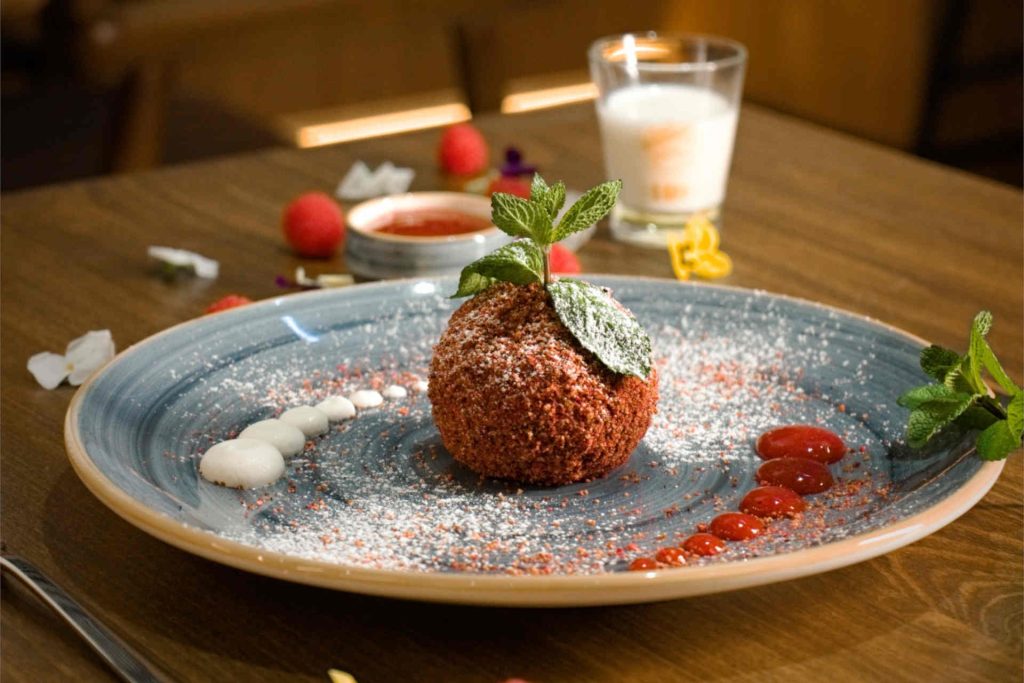
Austrian cuisine is synonymous with authenticity, flavor, and tradition. While classic dishes such as Wiener Schnitzel and Kaiserschmarrn remain ever-popular, a fascinating trend is emerging: more and more restaurateurs are striking the perfect balance between tradition and innovation – and finding remarkable success.
This is evident in the winners of the 2024 Lieferando Awards: Wiener Genuss Knödel was crowned “most innovative restaurant,” while Heurigenrestaurant Wittmann won the title of best Austrian restaurant. But what makes modern takes on traditional dishes so appealing? And are we witnessing a true revival of Austrian Wirtshausküche (Hausmannskost)?
Knödel (dumplings) are an essential part of Austrian culinary heritage, but at Wiener Genuss Knödel, they are reimagined in a way that pushes boundaries. Whether savory, sweet, or fruity, these traditional dumplings are given a modern twist with innovative fillings that create entirely new taste experiences. The concept proves that tradition and innovation are not mutually exclusive – they can, in fact, complement each other beautifully.
What makes a dish truly innovative? The key lies in blending familiar flavors with fresh interpretations. While classic dumplings are often served with apricots or gnocchi, Wiener Genuss Knödel surprises with creations such as Hot&Spicy – three types of cheese, jalapenos and chilli –, Mediterranean – paprika, feta cheese and olives – or sweet variations such as Red Velvet with raspberry and mascarpone. This approach appeals not only to lovers of traditional cuisine but also to a new generation of food enthusiasts seeking unique culinary adventures.
The Heurigenrestaurant Wittmann demonstrates that authentic Austrian cuisine is timeless – as long as it is presented with the right approach. Alongside its traditional offerings, the restaurant carefully integrates modern dishes made with high-quality, regional ingredients. This strategy bridges the gap between heritage and contemporary finesse.
The success of Wittmann’s heurigen is part of a broader movement: young restaurateurs are increasingly embracing Wirtshausküche (Hausmannskost) while moving away from outdated presentations. The focus is on locally sourced, high-quality products and a modern, often minimalist aesthetic – a deliberate departure from heavy wooden furniture and overwhelming menus.
Several factors contribute to its growing appeal:
The success of Wiener Genuss Knödel and Heurigenrestaurant Wittmann proves that Austrian Wirtshausküche (Hausmannskost) is experiencing a revival – but not in its original form. Instead, traditional dishes are being reimagined in ways that respect their heritage while embracing modern sensibilities.
Wirtshausküche 2.0 is more than just a trend – it is a statement of taste, cultural identity, and innovation. And this culinary evolution is far from over.

Imola is much more than just a race track: the city combines top-class cuisine, cultural monuments, and traditional producers to create an experience that delights connoisseurs, Italy fans, and curious travelers alike. From 2-star gastronomy at Ristorante San Domenico to creative pizza experiences and slow food osterie to historic libraries, palazzi, and award-winning wineries: this guide shows you the best places for cuisine, culture, and shopping—authentic, high-quality, and with real added value for your next visit to Imola.
The two-star Berlin restaurant Horváth returns to Vienna in early 2026 with an exclusive pop-up, presenting an uncompromising new menu based on “emancipated vegetable cuisine.” For two weeks, Sebastian and Jeannine Frank’s team will take over the Herzig restaurant and serve a 7-course menu that shows how innovative, precise, and luxurious vegetables can be today. A culinary highlight for foodies, fine dining fans, and anyone who doesn’t want to miss Austria’s most exciting pop-up experience of 2026.
This time, Sebastian Frank is taking an even more uncompromising approach, with a new menu and a clear message: vegetables can be luxurious – even without caviar.
With the opening of its new distillery in Mosbach, Aromahopping is sending a strong signal about the future of artisanal spirits. Between extraordinary gin compositions, creative tastings, and a high-caliber supporting program, it became clear what makes the Odenwald brand so special: attention to detail, curiosity about new flavors, and a passion for honest craftsmanship.


Austrian cuisine is synonymous with authenticity, flavor, and tradition. While classic dishes such as Wiener Schnitzel and Kaiserschmarrn remain ever-popular, a fascinating trend is emerging: more and more restaurateurs are striking the perfect balance between tradition and innovation – and finding remarkable success.
This is evident in the winners of the 2024 Lieferando Awards: Wiener Genuss Knödel was crowned “most innovative restaurant,” while Heurigenrestaurant Wittmann won the title of best Austrian restaurant. But what makes modern takes on traditional dishes so appealing? And are we witnessing a true revival of Austrian Wirtshausküche (Hausmannskost)?